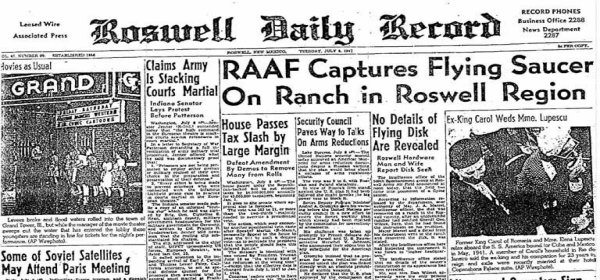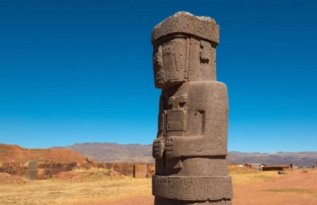-

From the fall of Atlantis...
-

To a forgotten past...
-

Clues in ancient maps...
-

And accidental revelations...
-

The post war truth revealed...

The idea of devices that allowed man to see other places
frequently occurs in ancient legends. For example, the Book of Enoch states that
Azaziel taught men to make mirrors, and according to this belief, distant scenes
and people could clearly be seen in them (42). Maxim Gorky, the Russian writer, met a Hindu Yogi in the
Caucasus. This Hindu asked Gorky if he wished to view something in his album, to
which Gorky replied that he wished to see pictures of India. The Hindu allegedly
put the album on the Russian's knees and requested that he turn the pages. The
polished copper sheets then showed beautiful cities, temples and landscapes of
India. At the end of the session Gorky returned the album to the Hindu. The Yogi
blew on it and asked whether Gorky wished to take another look. Gorky states
that "I opened the album and found nothing but copper plates without a trace of
any pictures (43).
Franciscus Picus in the Book of the Six Sciences
outlined the construction of the Al Muchefi mirror. It is said that in
this mirror one could see a panorama of time. Whilst these latter accounts appear to be in the realms of
science fiction, they seem remarkably out of place with our concepts of the
ancient world. And as the world became even older, this knowledge ebbed away,
becoming lost in the depths of time. It could reasonably be assumed that a world
that was developing would have built upon knowledge attained; a world in decline
would have seen its knowledge base crumble and fall into disrepair. (Of course,
the knowledge could simply have been borrowed rather than developed, of which
more later.)
Ulug Beg, a 15th century Uzbek
astronomer held a view that "mosques fall, palaces crumble into dust, but
knowledge remains." However, he was not as clever as he thought, for, as a
punishment for making this statement, he was sent on a pilgrimage to Mecca, and
was then murdered on the journey as a warning to others. Plato held a different view believing that
when knowledge was lost "you have to begin all over again as children." And
history records the loss of much knowledge through the centuries, including the
wanton destruction of great libraries.
These incidents include the
devastation of Persepolis,
the capital of the Persian Empire, which was torched when conquered by Alexander
the Great. The Romans also destroyed ancient Phoenician
and Carthaginian books when they ransacked the library of Carthage in 146 BCE
and their own records were subsequently destroyed during the later sacks of Rome
and the pillaging of Constantinople. Julius Caesar accidentally destroyed
thousands of books when he captured Alexandria, and although the destruction was
not complete, it became so later when Omar, the third Caliph of Islam, ordered
that the library's books be used for heating the public baths following his
conquest of the city in 636AD.
Some idea of how much ancient knowledge was
lost becomes apparent when it is noted that the books kept the baths hot for six
months. The Caliph had his own reasoning for this act of vandalism,
reportedly decreeing "the contents of these books are in conformity with the
Koran or they are not. If they are, the Koran is sufficient without them; if
they are not they are pernicious. Let them, therefore, be destroyed (43)." Other parts of the world witnessed similar destruction. Shih
Huang Ti, the unifying Emperor of the Chin Dynasty decided that Chinese history
should start with him. To that end he ordered that all books should be burned,
including those of Confucius, except those dealing with medicine, agriculture
and necromancy.
Other ancient records have been destroyed. Bishop Diego de
Landa in Yucatan in the early sixteenth century had all the Maya chronicles he
could find burned, and by doing so probably destroyed any hope of modern
researchers deciphering the ancient Mayan hieroglyphics that adorned the few
ancient texts that did survive his vandalism. These destructions
have robbed modern man of an understanding of much of his past, leaving merely a
confusing trail of out of place artefacts, archaeological remains and ancient
texts. Yet these clues
themselves appear to provide overwhelming evidence that mankind enjoyed an
earlier period when s/he had a greater knowledge than s/he had in subsequent
millennia.
From the stones
at Ica, the Antikythera Mechanism, the Nanjiig Belt to the early understanding
of the Earth's place in the solar system and universe, to the mathematics and
construction of the Great Pyramid, to the marvels of Tiahuanaco, it is clear
that someone, somewhere at sometime lived on this planet whose very existence is
now lost to us. Given that clues to the existence of this lost people scatter
the Earth, it could be assumed that we are searching for an entire
civilisation.

And if clues to this missing civilisation really are to be
found around the entire planet then there should be evidence of world-wide
prehistoric connections. And there are.
The most remarkable of these connections centres on the
links between Easter Island and the Indus Valley in Pakistan. (If the Earth was
shrunk to rest on the palm of your hand and you inserted a needle into Easter
Island then through the centre of the Earth, the needle would come out of the
other side of the planet in the vicinity of this valley.)
Easter Island, itself, lies in the Pacific Ocean, 2300 miles
west of the coast of Chile and some 2500 miles from Tiahuanaco (44). The island is only 45 square miles in area, but is known across
the world because of the mysterious statues that stand around its coastline on
stone platforms. The origin and purpose of these statues has never been
satisfactorily explained, and because they are made of stone, their age can
never be established. What we do know, however, is that the hats and chiselled
features of the Easter Island statues bear an uncanny resemblance to statues
found on the South American mainland at Tiahuanaco (above).
Alan Alford in his God of the New Millennium points
out the similarity between these South American statues and others found in Aija
in Peru, and the similarity between those and the depiction of an Indo-European
ruler from the Indus Valley. This latter connection may seem somewhat tenuous
(although the headbands on each statue provide the most convincing evidence),
but there is other supporting evidence of a prehistoric link between Easter
Island, South America and the Indus Valley.

|

|
Explore forgotton clues scattered throughout history that are suggestive
of an alternative history.
Join the world-wide search for evidence
of a lost civilisation that predates
known history.
Has Earth already been contacted by other civilisations either in the distant past or in recent centuries?
A discussion of the emergence of advanced technologies and the bizarre invasion of Antarctica after WWII.
A discussion of sightings of UFOs in the sky above Earth and within the solar system, including Moon anomalies.
Evidence the Earth has been visited by extraterrestrials and how the public had been subject to disinformation.
A list of credits and sources for the themes and issues explored
in Violations.
Violations is now available to purchase in
paperback or Kindle versions complete
with exclusive additional content!